Thursday Five: the mountain's most memorable moments
It’s Thursday and by now if you’re a mullet-toting and stubbie-wielding individual you’ll most likely be deeply engrossed in all of the lore, news, and gossip that’s emanating from the magical mountain of Bathurst.
The news outlets certainly are, sure to be barraging you with articles about the stars and their cars. And though we’d prefer to be a little more original about things at Driven, we couldn’t help but join in the fun. How edgy of us.
However this is at least a little different from our typical Thursday Five fare.
What normally happens with the coveted and hallowed Thursday Five article is that at some point between 12.30pm and 2.30pm the previous day, someone asks whether it’s been completed yet, to which I’ll say; “yes, it’s on its way! Just covering the final points.” And it’s at this point that I start writing it.
In short; they’re fun and light. This however is a little different.
To take ones name and stake it alongside an article about Bathurst lore is to line yourself up as a candidate for a spot on the sacrificial alter. If your views within appear skewed or short-sighted in any way at all, you won’t simply get a couple of emails of complaint. You’ll wake up the following morning with a horse’s head between the bed sheets and razor blades in your pillows.
So, with my flame suit firmly on, I declare this Thursday Five open.
2007 Supercheap Auto Bathurst 1000
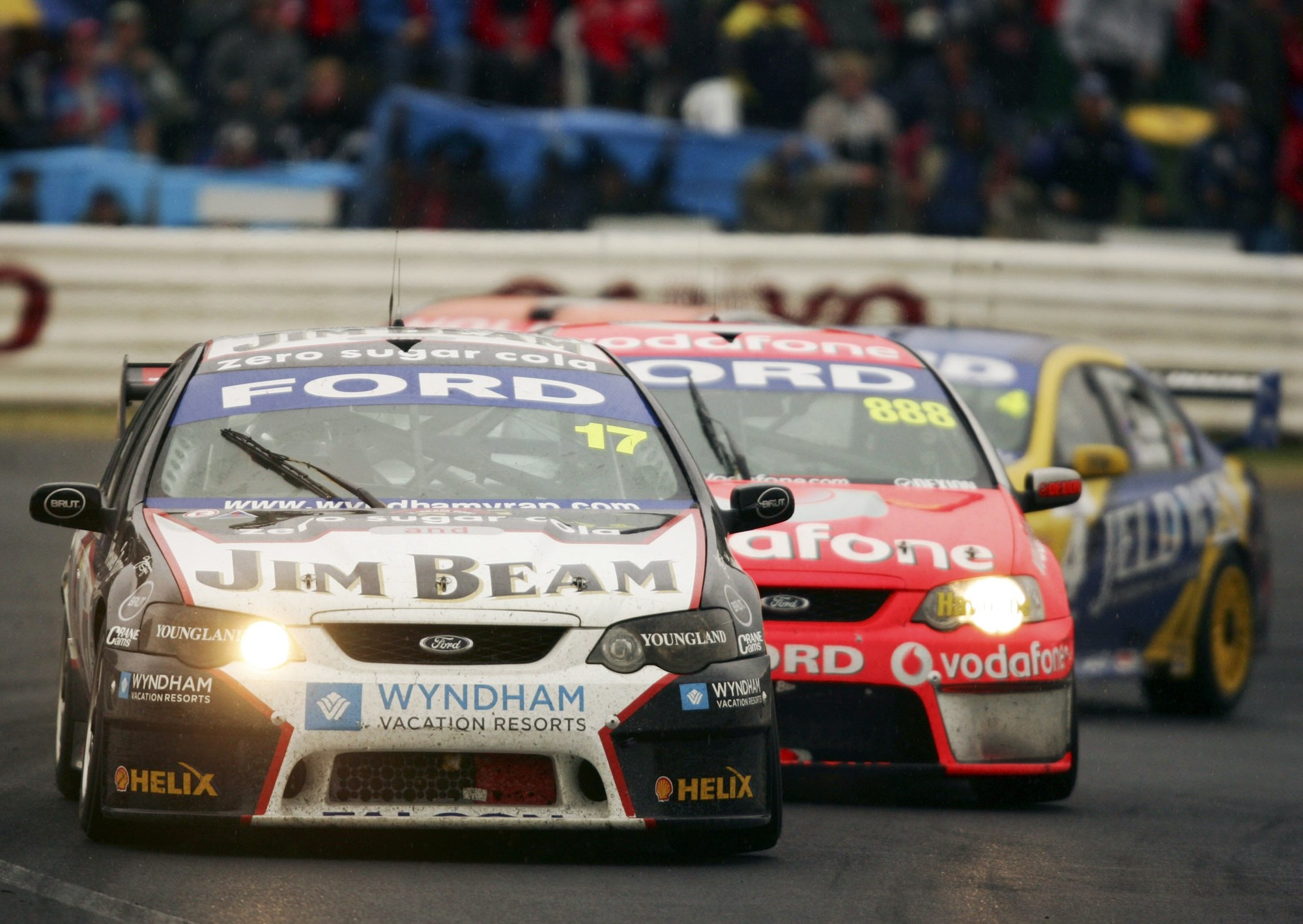
The 2007 race was like a shopping-list dream for many people. It had most elements that people drool over when it comes to tantilising race finishes — rain interrupting a long dry spell, cars on slick tyres, a selection of underdogs fighting for the win, and one of Bathurst's most popular sons in the middle of it all.
It started in plain enough fashion; Team Vodafone and Ford Performance Racing asserting dominance in their lead cars with Dick Johnson Racing and Tasman Motorsport giving chase.
But in the 30 laps a heck of a crescendo hit in the form of weather, enough to force everyone in the field to question whether they could peel into pit-lane for wet tyres.
The question was particularly poignant for Jason Bright and his Britek Ford Falcon. This was in the day when Bright was still a team owner, though his debut season racing his own car had largely gone terribly; a lack of car pace often seeing him to threaten the top 10 — particularly surprising given he had been a frequent podium scorer the season prior.
But here he was, leading the field by a solid margin having delayed his final pit stop to the last possible moment while everyone else completed theirs. A safety car for a stricken car added further spice, forcing Bright to make a now or never decision; slicks or wets, on a greasy surface.
Cold, unused slick tyres were the answer, and history shows that the result wasn't a good one.
Due to the benefits made on track, he emerged from the lane in third place, just behind Mark Winterbottom and Craig Lowndes, and ahead of a long long list of lead-lap contenders. But instead of being a cat amongst the pidgeons on wet tyres, Bright was more of a sitting duck; and he wound up clouting the wall.
Winterbottom's luck wore thin too, after a monumental error at the chase resulted in his Falcon sailing through the air at several hundred kilometres per hour while touring the sand trap.
The final race restart queued a brilliant fight to the line between Lowndes and an unlikely trio of combatants; Steve Johnson, Greg Murphy, and James Courtney. It was an incredible battle, and one that will go down as one of the best.
2014 Supercheap Auto Bathurst 1000
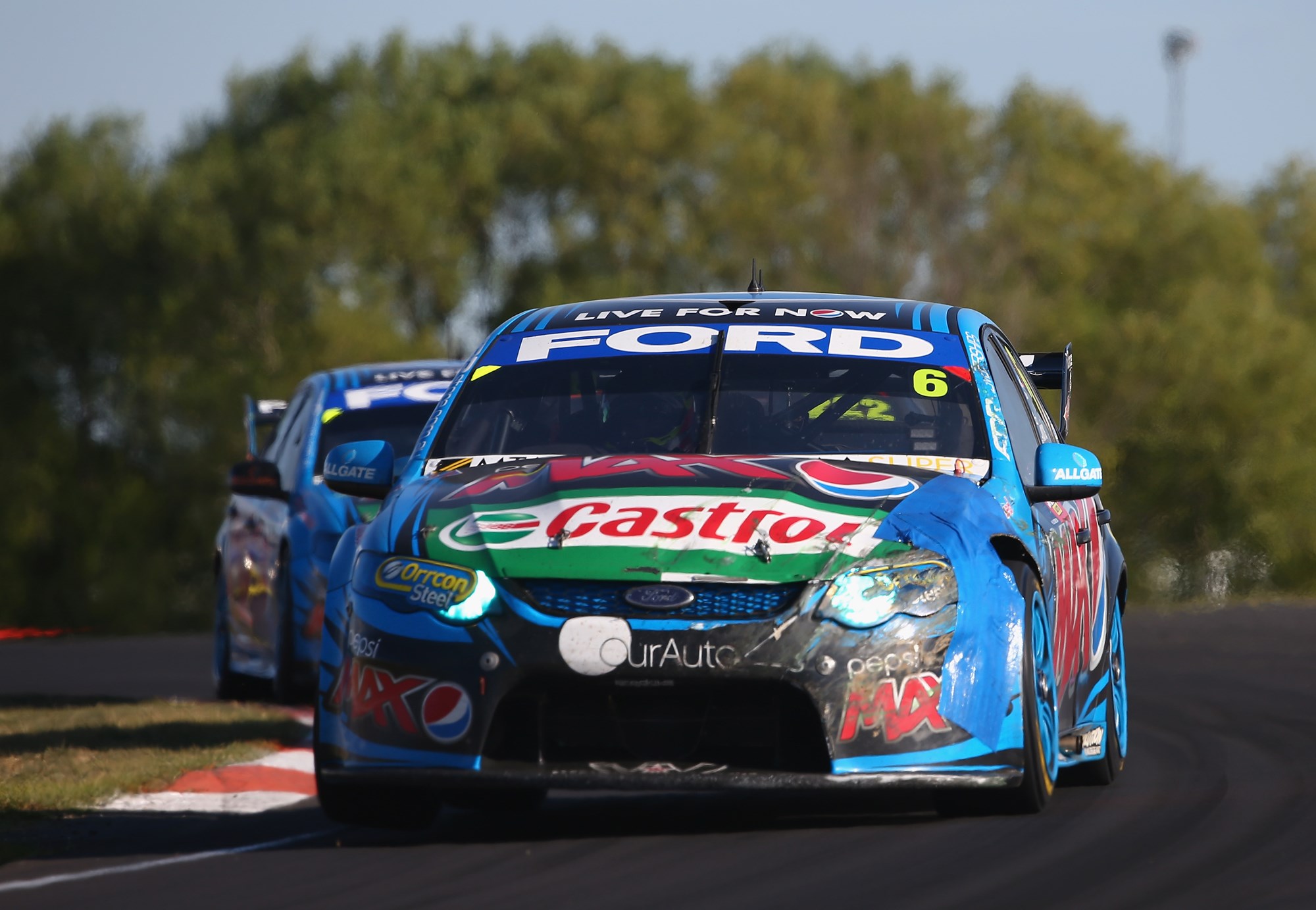
What the 2014 race did was take the chaos of the 2007 race, and spread it over eight hours of frustration and anger.
No race divides the masses in the way that the 2014 edition does. On one side are those who think it was a complete farce, and on the other are those who bow down to what was one of the most unpredictable eight-hour stints of television ever broadcast.
With more plot points and unbelievable twists than a season of Shortland Street, this race is hard to sum up in just a few paragraphs.
Shane van Gisbergen and co-driver Jonathan Webb drove exceptionally for most of the race, though they also benefited from others misfortunes. Random mechanical failures ended James Courtney and Greg Murphy's race (which eventually was Murphy's last Bathurst fling), and it was the same for David Reynolds and Dean Canto. Then there was Scott McLaughlin, who put his Volvo in the wall at the Cutting — scenes of him wiping tears inside his visor beamed around the world.
Then mid-race the circuit began to break up at Griffins Bend, prompting organisers to stop the race for almost an hour as the track was patched up. Multiple cars had strangely crashed after contacting the broken surface, adding another weird undertone to an already bizarre day.
In the end it was looking like a case of who could catch van Gisbergen, but that changed after the Kiwi's starter motor failed at his final pitstop — more drama.
In the end, somewhat ironically given the dominance of other teams, that all four Red Bull Racing and Pepsi Max Crew cars would battle for top honours. And we all know how that ended ...
1994 Tooheys Bathurst 1000
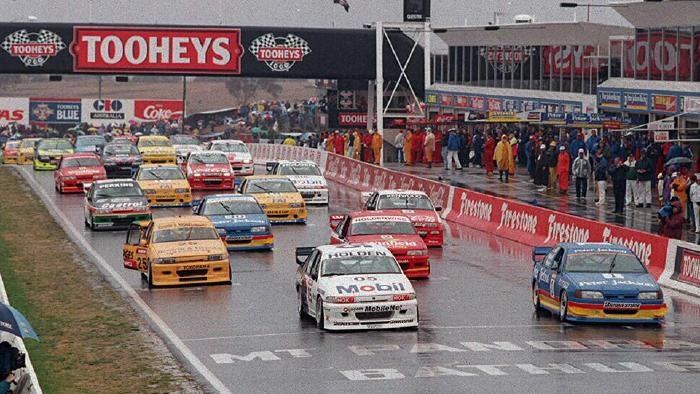
Like 2007, the 1994 race benefited from the age old theory of adding water to race tracks to create a bit of drama and intrigue.
Starting in some of the wettest conditions ever seen on the mountain, most of the field vanished into the spray coming up Mountain Straight and then again down Conrod.
What I miss about the Supercars of the '90s was their tendency to wallow and slide around, because it could make for some excellent television. And the beginning of the 1994 event was a case in point, as Larry Perkins hunted down then race-leader Peter Brock. The two dueled, positioning their cars with the finesse and precision of two drivers who knew each other's styles back to front.
Though in the end neither of them would factor for the win. Instead it came down to Shell's John Bowe, and some young whipper snapper named Craig Lowndes.
A Formula Ford champ, Lowndes was no slouch. But he was a relative unknown. This was his first ever drive at Bathurst, and it had come with Holden's most storied and popular team; the Holden Racing Team. Meanwhile Bowe was regarded as someone at the top of their game, and also as one of the hardest drivers in the championship to pass.
And yet Lowndes did it. Despite the rookie status, Lowndes ranged onto the back of Bowe and quite magically ripped the lead from his grasp by running around his outside at Griffins Bend.
While his time in the front wouldn't stick, it would ensure that he wouldn't remain an unknown for much longer.
1992 Tooheys Bathurst 1000
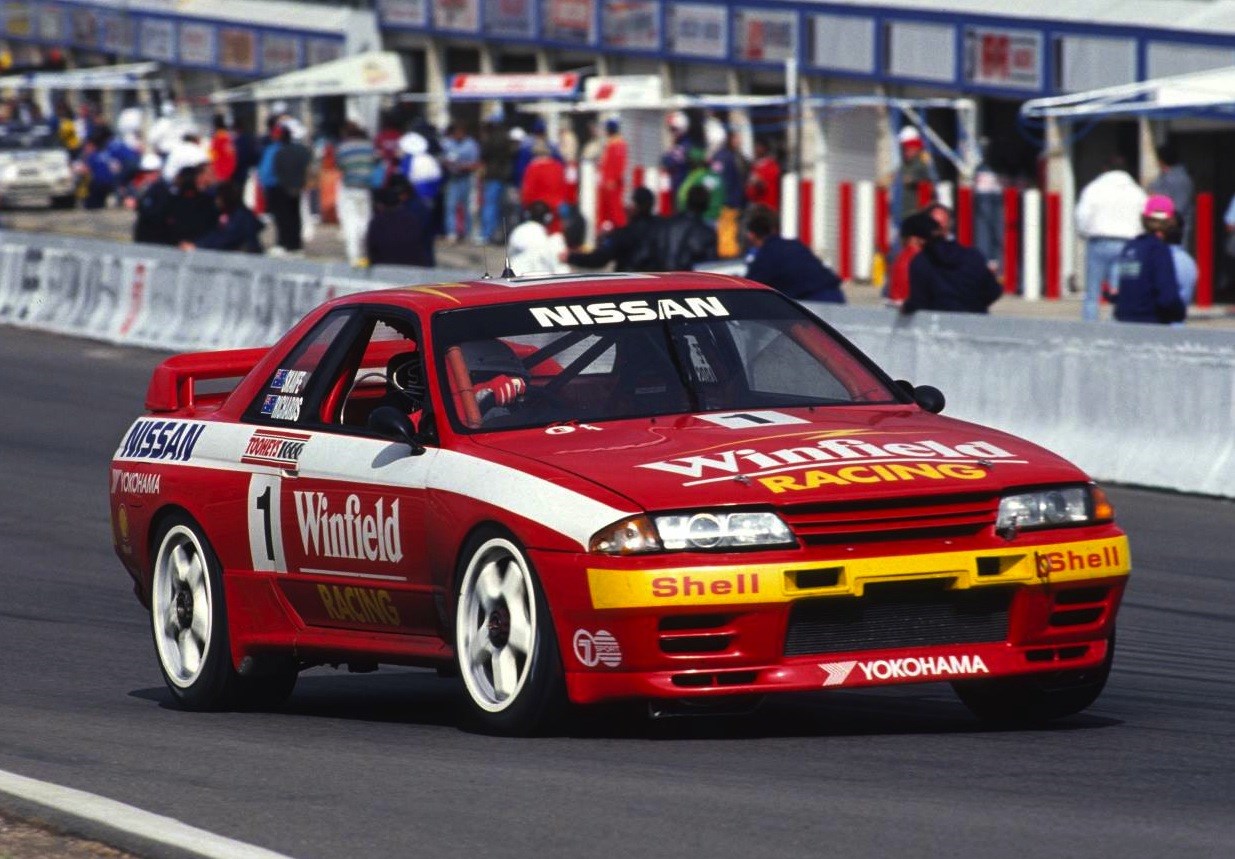
Ah, 1992.
The story of Group A, a bit like my beloved Super Touring of the '90s, is a messy one — and one that could fill a whole book. And 1992 helped epitomize that.
The four-wheel drive and steer Nissan Skyline R32 GT-R took mere months to become arguably the most disliked car in Australian touring-car history; by virtue of its ability to win absolutely anywhere. And by late 1992 it had won two championship titles at a canter.
Bathurst that year, the last of its kind before a new replacement formula based around five-liter V8s was implemented, was certain to be another cake-walk. But, it very nearly wasn't.
Having predictably romped through practice, qualifying, and most of the race unscathed and out the front, the GT-R of Jim Richards and Mark Skaife was the gun to beat. Dick Johnson and John Bowe led the charge of the Ford Sierra RS500 Cosworths, but couldn't bridge that margin.
Then, like in 2007, rain arrived and completely altered circumstances.
However unlike 2007 this was proper concrete pill rain, with standing water reaching remarkable levels all over the circuit, making it look like glass.
In just one lap things became Armageddon. A multi-car pile-up had commenced exiting Forest Elbow, a Toyota Levin had spectacularly launched itself skywards at Griffins before coming to a rest on its side, and most notably Jim Richards had carved a corner off the GT-R.
It was a cruel irony, for a car that very rarely over its two-year reign had incurred a single scratch. And it got worse when it arrived at Forest Elbow with no steering and some four or so cars waiting to be struck. It crashed, and many thought that would be that. Certainly Dick Johnson did, celebrating that he'd won when the race was red flagged shortly after.
However, on a count back the win was handed to the Winfield team, triggering a ferocious response from the crowd and cementing the moment in Bathurst folklore.
1972 Hardie-Ferodo 500
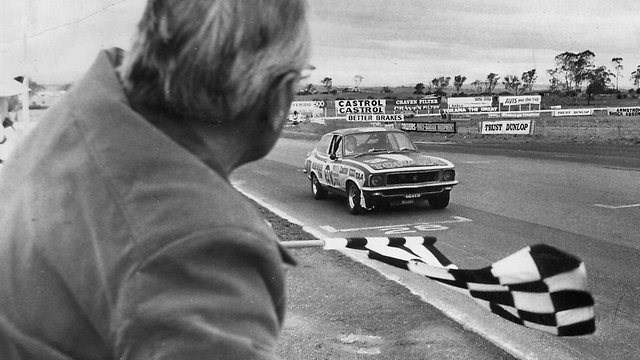
As someone who wasn't alive for many of the 'great moments' that Bathurst historians hold dear, I find it hard to reminisce about those old days with similar levels of admiration.
Yes it was very impressive that Peter Brock and Jim Richards won in 1979 by six laps, but where's the excitement in a win that was clearly so easy? The same could possibly said of Allan Moffat and Ford's domination two-years prior — what's exciting about those circumstances?
My theory is that those who look back on that period in time so fondly do so not because the racing was particularly great, but because they loved the way the rest of the sport was; the characters both in terms of the cars and the drivers, and how those things interacted with them.
But that can't stop me from tipping my hat to the 1972 race; the last ever 500-mile event, and the last time drivers were allowed to compete solo.
If for nothing else, the 1972 Hardie-Ferodo 500 can be held in high esteem for presenting us with a race that would help take the tribal warfare of Holden and Ford to the lofty heights that it would enjoy for nearly five decades.
It did this through an unforgettable fight between Canadian Allan Moffat and home-grown hero Peter Brock.
It was a lengthy game of cat and mouse that would also define the Brock and Moffat rivalry for many years; Moffat able to grow his leading margin on the straights in his big powerful Ford Falcon XY GTHO, while Brock would reel him in every lap through the nuanced corners over the top of the mountain.
Eventually Moffat caved, spinning out at Reid Park and handing Brock a tense win, but it was more than that. Like the torrential downpour of 1992, it built towards the lore and mystique of the mountain, and helped forge our current concepts around Bathurst. Our desire for a combination of villains, underdogs, and rivalries that can't be matched by any other race in the world. That's why it's here.




